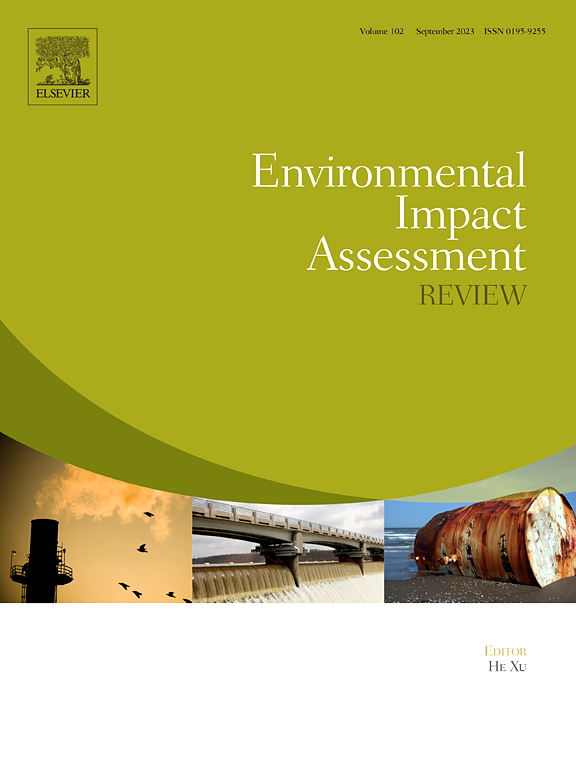Quantifying the non-linear response of bird diversity to landscape features in metropolitan areas: A machine learning-based analysis
IF 9.8
1区 社会学
Q1 ENVIRONMENTAL STUDIES
引用次数: 0
Abstract
Understanding the relationship between urban bird diversity and landscape features is essential for effective biodiversity conservation and sustainable urban development. This study utilizes bird observation data collected from a citizen science platform in Nanjing, China, to explore the spatial scales most appropriate for assessing urban bird diversity (species richness and functional diversity) and their non-linear associations with various landscape features. Advanced machine learning models, such as Boosted Regression Trees (BRT), eXtreme Gradient Boosting (XGBoost), and SHapley Additive exPlanations (SHAP), were employed to analyze these relationships. Key findings include: (1) A sum of 275 bird species were recorded in Nanjing's main urban area, with Passeriformes (77.06 %) being the dominant order. Both indices increased in average value as the scale size expanded (300 m, 500 m, 700 m, 900 m, 1100 m, 1300 m, and 1500 m). Statistical analysis indicated a more random spatial distribution of bird richness at smaller scales (300–700 m, Moran's I = 0.24), while functional diversity remained largely stable across scales. (2) The BRT results indicated that the relationship between bird diversity indices and landscape features peaked at the 900 m scale, which was thus identified as the optimal spatial scale. (3) Excessive nighttime lighting (values >62), high building density (> 0.15), and road density (> 5) were found to suppress bird diversity, while favorable terrain conditions, such as moderate elevation (50–150 m), aspect angles (100°–200°), and gentle slopes (< 5°), along with enhanced ecological conditions (RSEI >0.5) promoted it. Interaction analyses further demonstrated that the effects of terrain variables, building density, and road density attenuated the negative impacts of urban nighttime lighting. These findings offer practical implications for urban planning and design by identifying scale-sensitive and threshold-based strategies to support bird biodiversity and promote harmonious coexistence between humans and nature in metropolitan landscapes.
都市地区鸟类多样性对景观特征的非线性响应量化:基于机器学习的分析
了解城市鸟类多样性与景观特征的关系,对有效保护生物多样性和促进城市可持续发展具有重要意义。本研究利用南京市某市民科学平台收集的鸟类观测数据,探索最适合评估城市鸟类多样性(物种丰富度和功能多样性)的空间尺度及其与各种景观特征的非线性关联。先进的机器学习模型,如增强回归树(BRT)、极端梯度增强(XGBoost)和SHapley加性解释(SHAP),被用来分析这些关系。主要发现如下:(1)南京主城区共记录鸟类275种,雀形目占77.06%;随着尺度的扩大(300 m、500 m、700 m、900 m、1100 m、1300 m和1500 m),两项指标的平均值均增大。统计分析表明,在较小尺度上(300 ~ 700 m, Moran’s I = 0.24),鸟类丰富度的空间分布更具随机性,而功能多样性在不同尺度上基本保持稳定。(2) BRT结果表明,鸟类多样性指数与景观特征的关系在900 m尺度上达到峰值,为最佳空间尺度。(3)夜间照明过度(值>;62),建筑密度高(>;0.15),道路密度(>;5)中等海拔(50 ~ 150 m)、坡向角(100°~ 200°)、缓坡(<;5°),以及增强的生态条件(RSEI >0.5)促进了它。交互作用分析进一步表明,地形变量、建筑密度和道路密度的影响减弱了城市夜间照明的负面影响。研究结果为城市规划和设计提供了尺度敏感和阈值策略,以支持城市景观中鸟类的生物多样性,促进人与自然的和谐共存。
本文章由计算机程序翻译,如有差异,请以英文原文为准。
求助全文
约1分钟内获得全文
求助全文
来源期刊

Environmental Impact Assessment Review
ENVIRONMENTAL STUDIES-
CiteScore
12.60
自引率
10.10%
发文量
200
审稿时长
33 days
期刊介绍:
Environmental Impact Assessment Review is an interdisciplinary journal that serves a global audience of practitioners, policymakers, and academics involved in assessing the environmental impact of policies, projects, processes, and products. The journal focuses on innovative theory and practice in environmental impact assessment (EIA). Papers are expected to present innovative ideas, be topical, and coherent. The journal emphasizes concepts, methods, techniques, approaches, and systems related to EIA theory and practice.
 求助内容:
求助内容: 应助结果提醒方式:
应助结果提醒方式:


